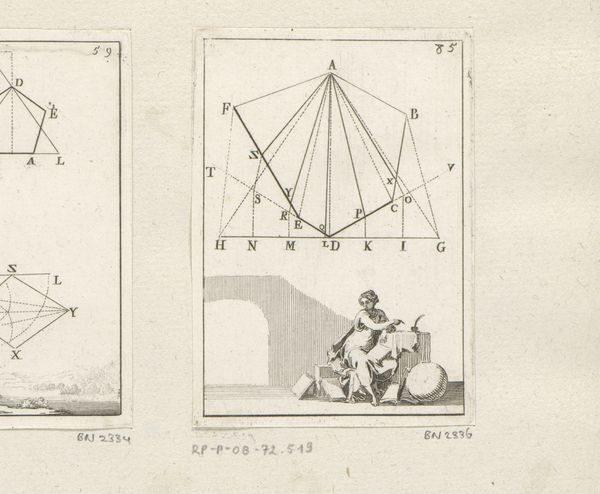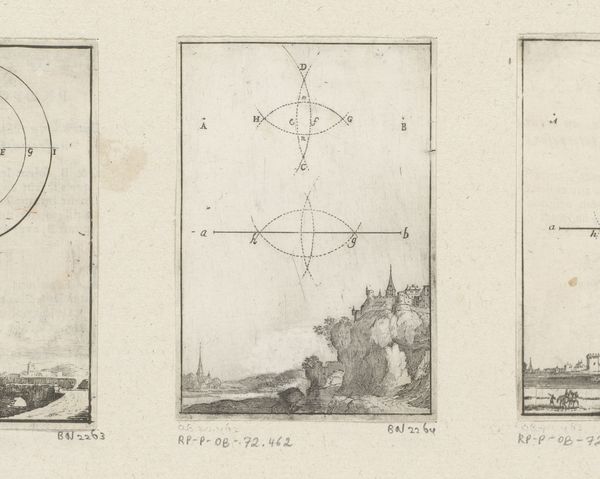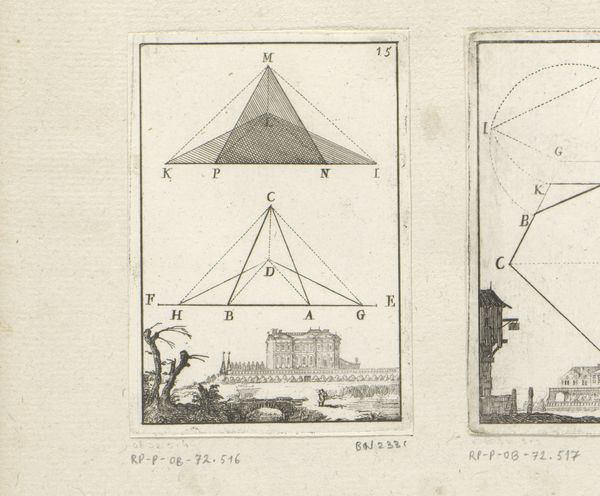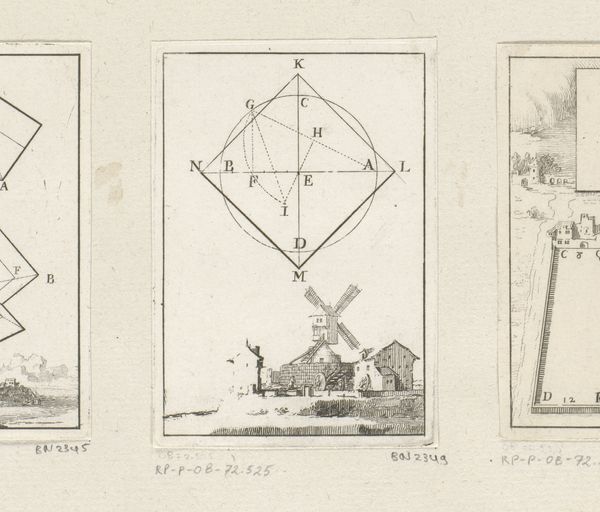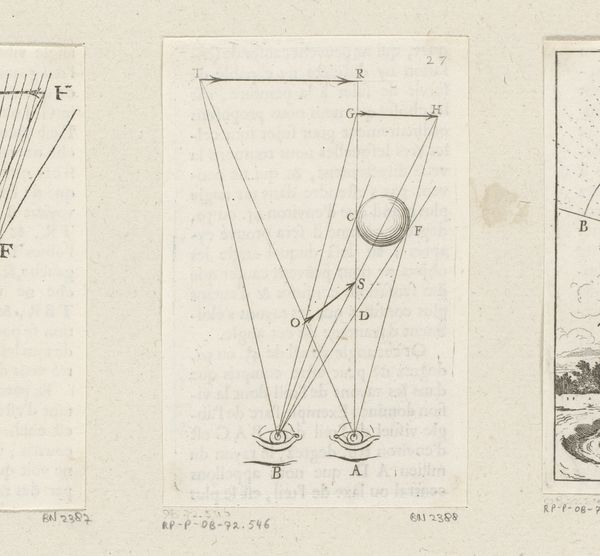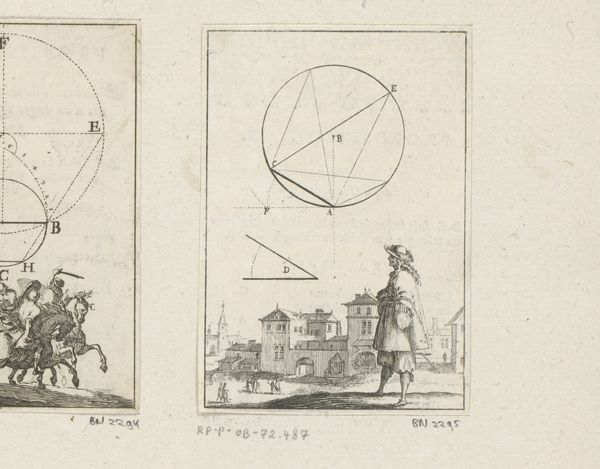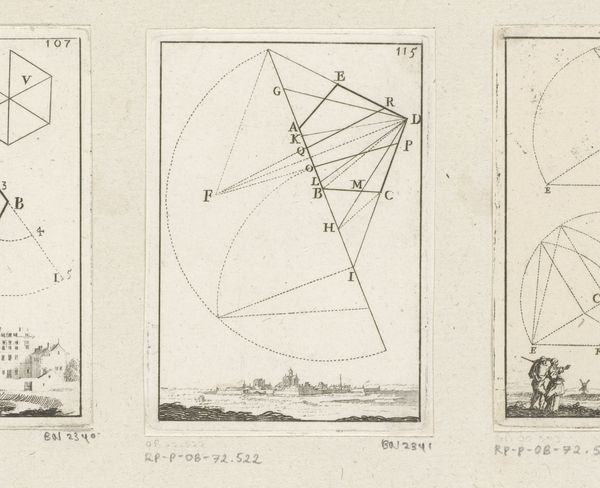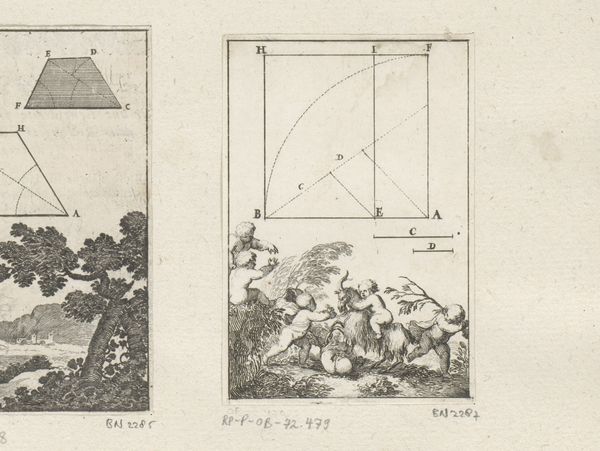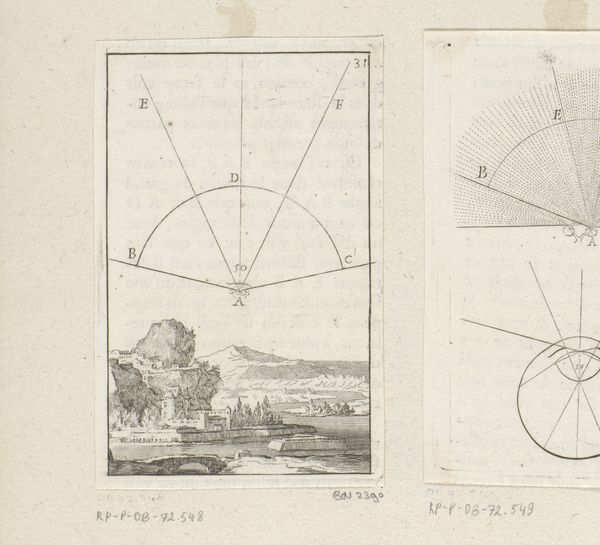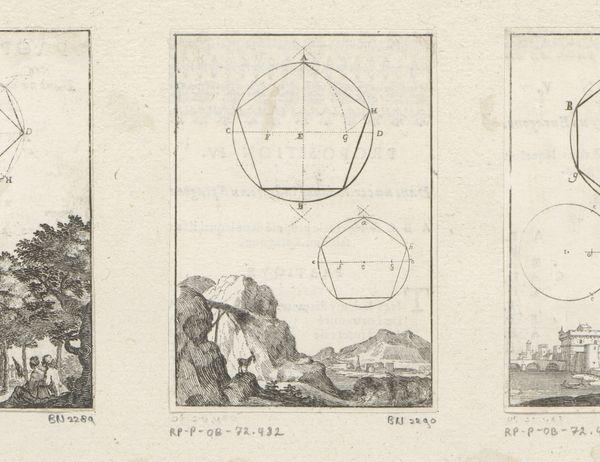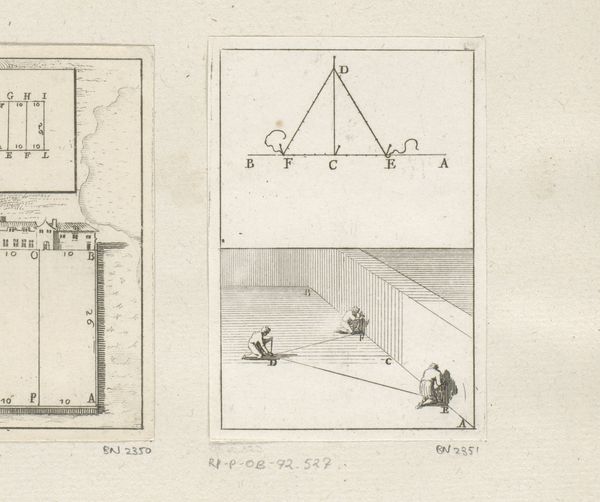
Verdeling van een oppervlak in gelijke delen met onderaan een zittende man 1669
0:00
0:00
drawing, print, engraving
#
portrait
#
drawing
#
baroque
# print
#
landscape
#
geometric
#
academic-art
#
engraving
Dimensions: height 94 mm, width 67 mm
Copyright: Rijks Museum: Open Domain
Curator: Welcome to the Rijksmuseum. Before us is an engraving by Sébastien Leclerc I, dating back to 1669, titled "Verdeling van een oppervlak in gelijke delen met onderaan een zittende man" – "Division of an area into equal parts with a seated man at the bottom." Editor: Whoa. It hits you with an intensity of lines! The geometric diagram nearly explodes outward, with this rather relaxed, robed dude seemingly unaffected by the mathematical fireworks above him. It makes me think about chaos and calm living side by side. Curator: Precisely! This work encapsulates the 17th-century tension between scientific rationalism and the human experience. Leclerc was not just an artist, but an engineer, demonstrating the intersection of art, science, and power, at a time when geometry underpinned architectural design and military strategy. Notice how the figure below, likely representing a learned scholar or artist, is passively observing a visualization of complex geometry. Editor: Totally, it's as if he's contemplating the beauty of order. I also get this odd sense of containment—he’s framed, but the energy from that diagram almost breaches its own visual boundary. It’s kind of…anxious. Curator: Well observed! The engraving allows us to consider the place of the intellectual within larger societal structures. Leclerc places the figure beneath these forceful geometrical lines, perhaps commenting on the status of men of science. There are power dynamics visualized in how scientific study can reinforce dominant societal norms. Editor: I see that. Plus, it almost looks like he's daydreaming. Maybe this complex geometry is a mental cage. Or perhaps its beautiful visual form is an invitation for our dreams to break free. The neat logic above is mirrored with this free-flowing image of someone in thought below! Curator: I'm glad to hear your free association here! Leclerc's print encourages dialogue regarding who participates in building our vision of rational systems and to whose benefit they ultimately serve. Editor: Right, it also makes you consider our role in viewing it. The calm figure reminds me to be as calm, and as reflective, when trying to dissect the complex. Curator: That is wonderfully put! This work can stimulate a lot of debate. Thank you for offering your insights! Editor: My pleasure. Always a delight to find these kinds of discussions emerging with an unexpected picture.
Comments
No comments
Be the first to comment and join the conversation on the ultimate creative platform.
